
In the early part of the twentieth century a pioneering woman named Aimee Le Prince Voorhees and her husband Harry built a pottery works in the shadow of Inwood hill.
In this pastoral setting, lacking any modern conveniences, Voorhees created a world-class pottery studio and inspired a future generation of artists, ceramicists and sculptors. Among the students who studied under Mrs. Voorhees as a child was Lorrie Goulet who went on to become one of the most prominent figures in American sculpture.
What follows is a 1926 portrait of Aimee Le Prince Voorhees captured in her studio located within the current Inwood Hill Park.
Brooklyn Daily Eagle
“Practices Ancient Art in Virgin Forest“
Studio of Mrs. Aimee Voorhees Hidden in Little Known Part of Manhattan Island
By Esther A. Coster
Mrs. Aimee Le Prince Voorhees, creator of a new idea in pottery, is a living example of the truth of Emerson’s saying about the path being worn to the door of anybody who would make a fine article, even though it be a mousetrap. Mrs. Voorhees has hidden her studio in the virgin woods, and only a seeker for the place could ever find it except by accident. But there is a well-worn path up the steep hill to her studio.

Let me give you a picture of this most unusual retreat of two artists, Mrs. Voorhees and her husband, Harry, who work together in the studio and play together in their cruiser. The Thyra is moored at the foot of the dooryard in the little harbor made by the original channel of the old Ship Canal in upper New York City, no longer used by larger craft.
This studio is perched on the side of a hill, with the buildings rising one above the other, with the steepest of steps to connect them. To reach it you walk along West 207th Street, Manhattan, to the end of the street and still farther to the end of a cinder road. Then you take a steep wooded path up the hill until a sign, “Indian Life Reservation,” greets you. Just beyond this is a small rustic gate with the very modest shingle of the studio.

The mistress of the domain, dressed in a blue smock and comfortable slippers, greeted her visitor with a cordial handshake and insisted on tea before we began our interview. We sat down to a round rustic table, the most primitive sort of stand, with rustic chairs, all set out in the woods in front of the studio.
Mrs. Voorhees is not a bit the stereotyped artist type that is supposed to be connected with kilns and pottery and crafts. A well-built woman, past thirty years, she was dressed in skirts longer than the style calls for now, and with long golden-brown hair piled high over her head in a big coil. She talked freely and simply about her work, used none of the patter by which less genuine artists try to camouflage their attempts at art expression, and was very proud of her home and its unique environment. How she might dress when visiting “the city” is probably another story.

“As you see, we live the most primitive life,” she said, “but we do not lack a single comfort. We have no electricity up here, but we get fine light from gasoline lamps. We have no heat, but our coal stoves keep us warm on the coldest days. We have no city water piped to our home, but we the purest water, ice cold, from springs that are at least one hundred years old. We are surrounded by the inspiration of nature and the traditions of the Indians who made their homes here hundreds of years ago. What more can anybody ask?”
Mrs. Voorhees and her husband, for it is impossible to write of the hostess of the studio without including the host, have two deep-seated enthusiasms that have influenced their entire work. They love the sea and they love Indian lore. From the sea they have drawn many of their designs and on the bowls and vases the seahorse, shells and other nautical motifs occur constantly. When the Half Moon of Hendrik Hudson was in the “orick,” as they call the strip of water below their dooryard, Mrs. Voorhees made studies of the ship and has embodied them in a doorstop interpreted in pottery.

These people are also devoted to Indian traditions, and it is from Indian art that their chief inspiration has come from a unique type of Pottery. We will let Mrs. Voorhees explain for herself:
“We have been interested for years in Indian history and art,” she said, “and have studied deeply into the subject. The Indian Museum has worked with us. As you see, I draw inspiration for many of my shapes from the Indian pottery, adapting them to modern ideas without spoiling the purity of the primitive form. The designs, when we add decoration, are authentic Indian designs, with only such changes as are necessary to fit the shape decorated. In the finish of the pottery I use two methods. For table service I use glazes. For pieces that do not have to be used for table service I use the method of the Indians as closely as I have been able to follow it. I cannot make true Indian pottery, for I do not know what clays they use and I do not use the same sort of colors for the under glaze decorations. But after these decorations are fired I finish the surface with wax, rubbing it into the body until a smooth dull finish is obtained. The pieces will hold water, but I do not sell them for table service like plates or cups. I use as many Indian designs as I can. See this little Indian frog? I love to make frogs, they have such a humorous look.”

Right here Mrs. Voorhees unconsciously gave away one of the deep secrets of her success. She has a keen sense of humor and it shows in all her work. She models small animals for whistles that you can’t help smiling at, they are so full of happy thoughts. Her seahorses that climb up her lamps or serve as handles to her bowls are almost alive in their gaiety. Surely here is a woman who finds life happy and cannot help putting it into her work.
Of course, we wanted to know how our hostess came to take up pottery and how she happened to choose such an ideal spot for her work. The lady of the manor flashed her brilliant smile and settled down for a chat, meantime keeping her eye on her kiln, in which were precious pieces for an exhibition in the Woman’s Exposition of Arts and Industries.
“I inherited my love for art work,” she said. “My mother and father were both artists. They conducted the League School of China Painting in England, where I absorbed the art almost by instinct. On their coming to this country my mother founded the New York Society of Ceramic Arts and the National League of Mineral Painters. At the first exhibit of the New York Society at Carnegie Hall the crowd was so great the police and fireman were called. Can you imagine that now at an exhibition of porcelains or pottery? I studied porcelain decoration with my mother and at the National Academy of Design and Teachers College. I also for a time conducted a private school. When I married, fifteen years ago, my husband was also an artist, and we dreamed of establishing a colony for craftwork. But little by little this has been displaced in our interests by the pottery, so that now our chief work is right here with the wheel and the kiln.”

Then she shifted to the story of how she came to settle on the Inwood hill. “We were cruising ten years ago,” she said, “and our engine went dead just in this little harbor. We moored her and started exploring and were fascinated by the primitive beauty of the hill. There was an old house, all tumble down, occupied by ‘Pop,’ an old boatman. Six years ago we found it vacant and bought it. We remodeled it, put in floors and added to it to suit our needs. The other buildings we have added as the work expanded. We do not own the land, as it is park property, but the buildings are all ours. We had painting parties, fencing parties and all sorts of parties till we got that house fixed. It was the best kind of fun.” And you should have seen her eyes twinkle as she told of those groups of city folks trying to paint floors and put up fences.
Mrs. Voorhees is original even in her tools. She uses the regulation potters wheel, but the motive power is certainly unique. She cannot draw on electric or steam power, so she has gone back to the ancient foot power. She has taken an old motorcar tire, filled it with cement and Inwood rocks and placed flat circular pieces of wood on each side for the lower wheel. It is placed on ball bearings and when touched lightly with her foot it whirls the wheel above as perfectly as the most approved electric plant. It is also much more in keeping with the studio.
Even the showroom of the studio is unique. It was originally the cabin of a canal-boat which was, somehow and sometime ago, hitched to the old house. By cutting an added window it makes an ideal showroom and fits the spirit of the house, which has a nautical atmosphere.
The tiny, compact kitchen is fitted up like a ship’s galley, with brass bands on the edges of the shelves and everything spick and span in the smallest possible space. The living room has as its chief decoration a ship model, given to the artists by a seafaring friend.
The love of nature that permeates every corner of Mrs. Voorhee’s soul crops out in her work at every hand. She took up a small glass jar and exultingly said:
“Just look at this. I found this in our woods. Did you ever see such wonderful design as those wings.”
And what do you think she had carefully kept in the jar? The largest mosquito I ever saw, larger than anybody’s imagination could picture. It is known as the “stork mosquito.” The artist will use that design on one of her bowls or pitchers, and everybody will wonder where she found it. Her talent has also been used for scientific purposes. A set of models, heroic size, of three varieties of mosquitoes, is now in the Sesquicentennial. These were made originally for the Board of Health.

Near the studio are the famous Indian caves, in which hundreds of Indian relics have been discovered. Mrs. Voorhees, like all artists handling mineral glazes, feels the fascination of the art, because once a piece is in the kiln one is never sure what will come out. She showed two bowls of turquoise blue glaze mottled in a most unusual manner with brown. “That was pure accident,” she said. “I wish I knew what caused it, for I would like to use that effect again. The accidents are the most fascinating part of pottery, for one can never duplicate accidental color effects.”
Mrs. Voorhees has the distinction of having the only pottery in Greater New York except a studio in Greenwich House, which turns out a few pieces for pupils, and, so far as known, the only pottery in any large city. But to visit the studio one feels that one is in the far wilderness. Nothing could be harder to realize than that “this is New York,” when virgin trees are all about, there is no sound except the noises of the woods, and nowhere are there evidences of those adjuncts of city life that we have come to believe essential to happiness. “If I lived in a city apartment or house,” said Mrs. Voorhees, “I know I could not do the work I do now. It is the close contact with nature that gives me inspiration. When I look across the water and see that great tulip tree that is the tallest tree in New York State and is two hundred and forty years old, I realize the Indian art that flourished on this hill centuries ago and it makes me very humble. But I love this work and hope to some day realize more nearly my ideals.”
But, with a longing look at the river where the Thyra lay moored, she said, with a glance across at her husband: “Some day we hope to be able again to enjoy the long cruises we both love. At present we have been too busy to spare the time.”
A black kitty and a white doggie added the last touch of domesticity to an ideal combination of home and profession.
Examples of Inwood Pottery:
For more information on the Inwood Pottery Works click on either of the below links:


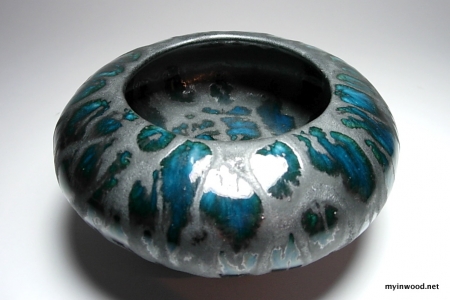
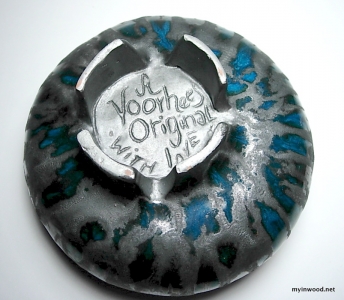
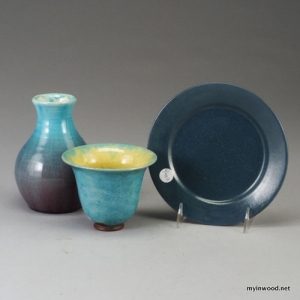
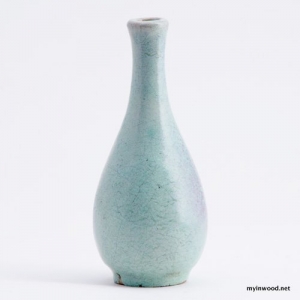
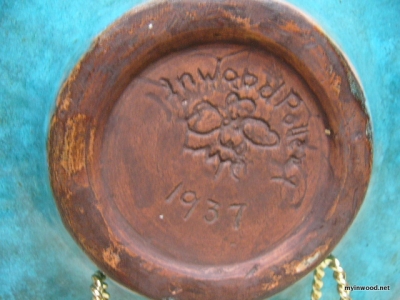
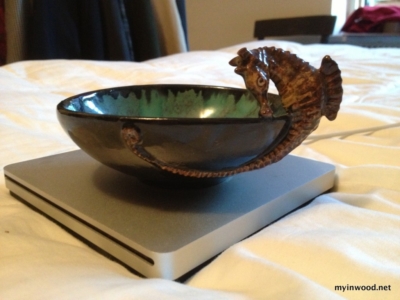
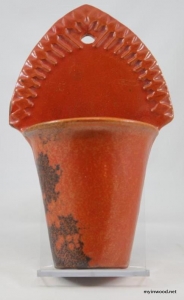
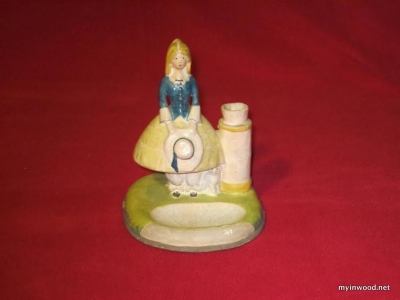
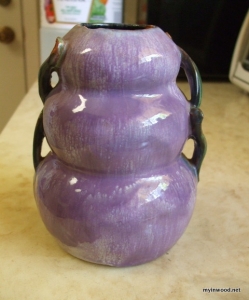
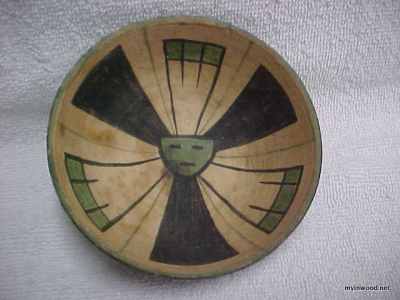
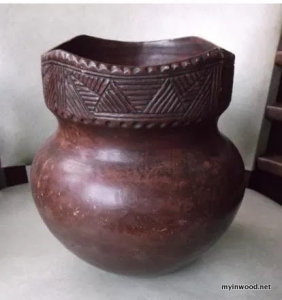
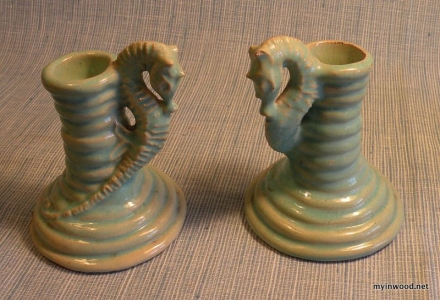
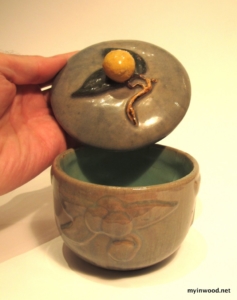
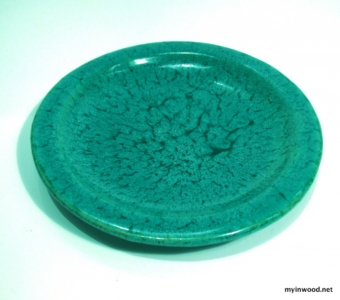

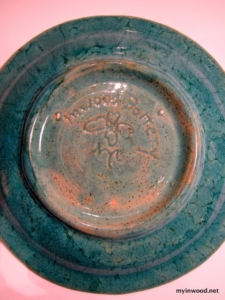
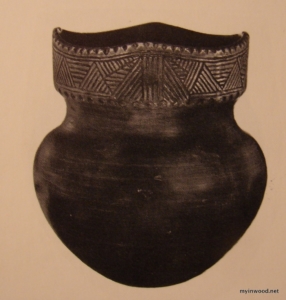







I was very happy to see this article. I was a student of Mrs. Voorhees from age seven to eleven. This was from 1932 to 1936. It was one of my happiest experiences. I was there when Mrs. Voorhees had to abandon her pottery.
I wrote a letter to Mayor LaGuardia asking him to give Mrs. Voorhees more time to move. He did give her three months more. Because of my time at the pottery, my life in art was very much influenced. I became a sculptor, and have never forgotten Mrs. Voorhees, my first teacher.
I am now eighty-five years old, and still working!
I’m honored. Thank you for writing in. If you have any more memories you’d care to share, please keep typing away. All the best. Cole
[…] Inwood Arts Pioneer: Aimee Le Prince Voorhees […]